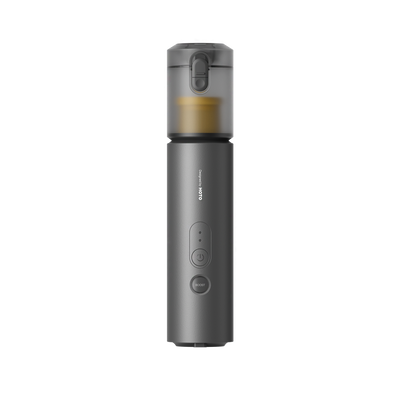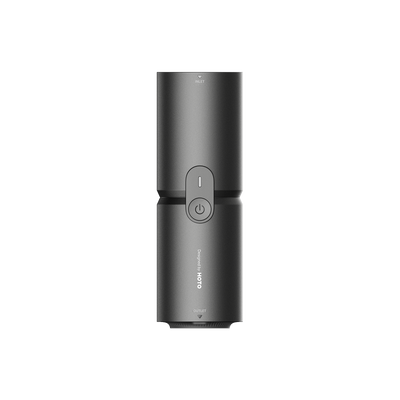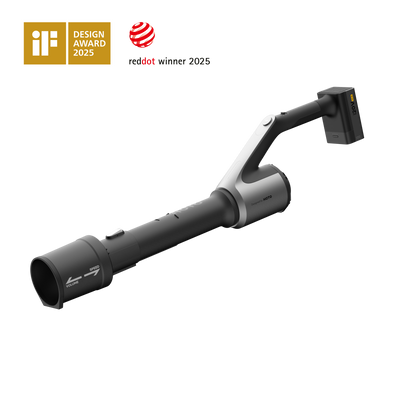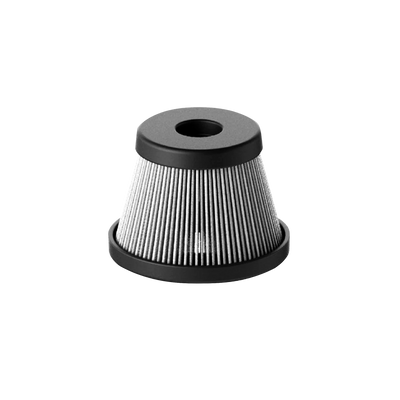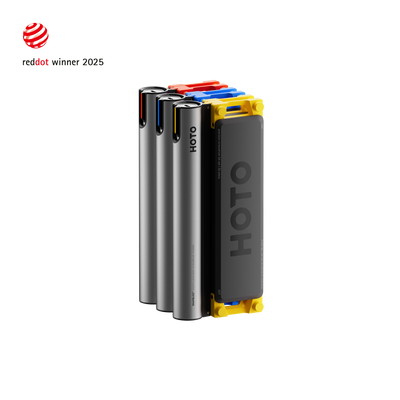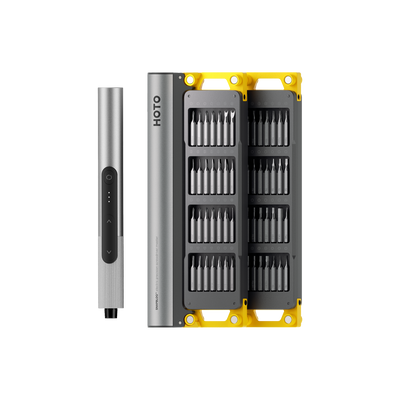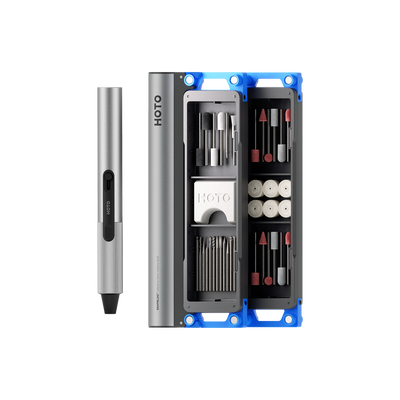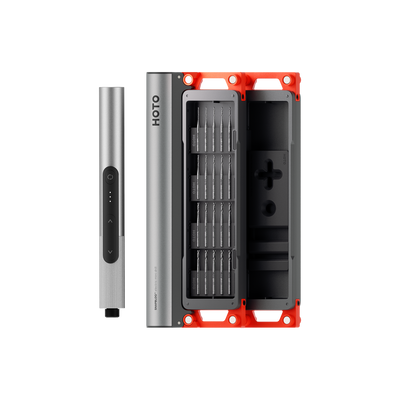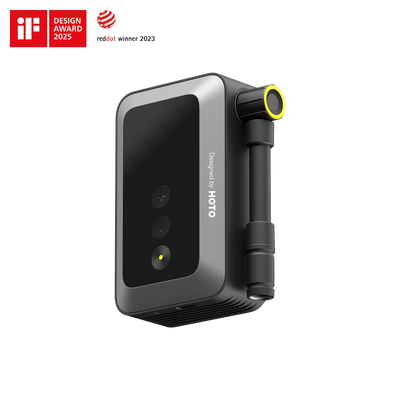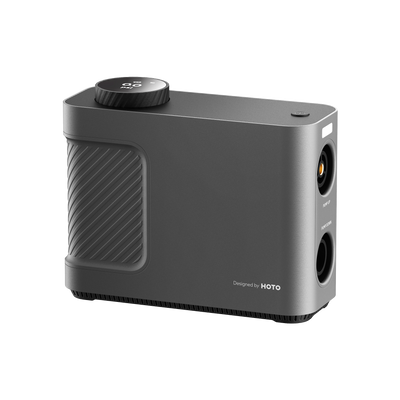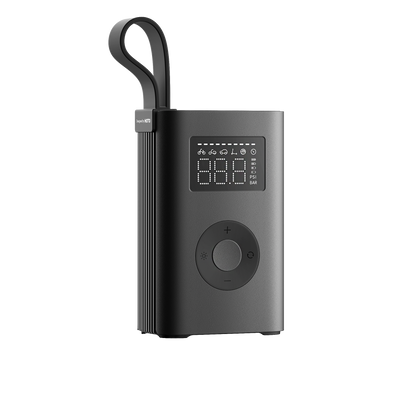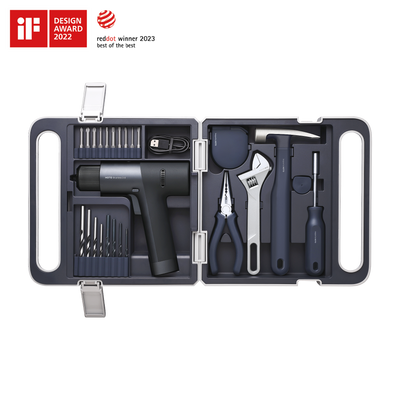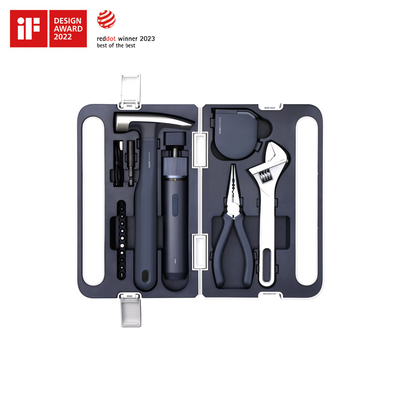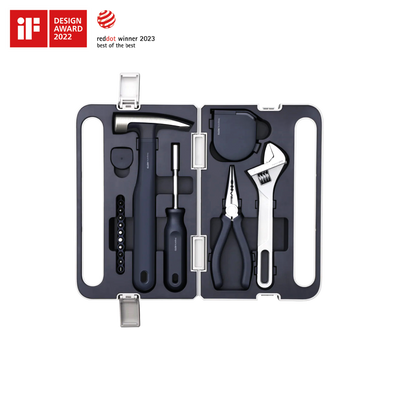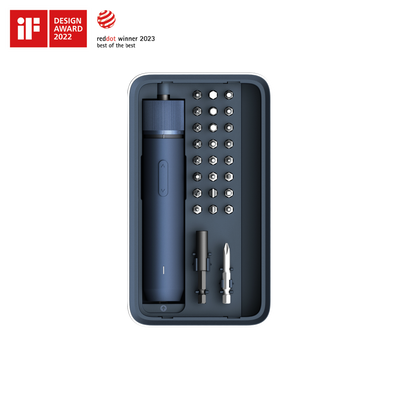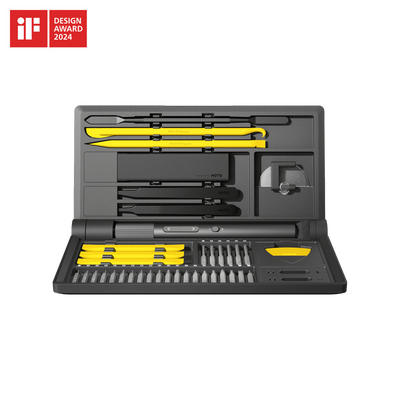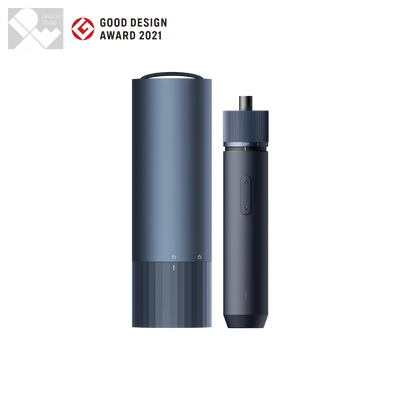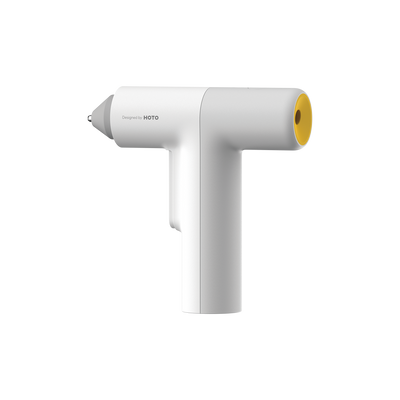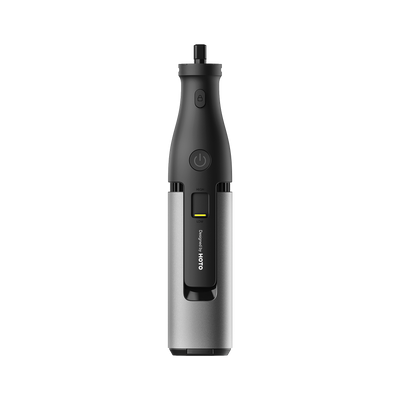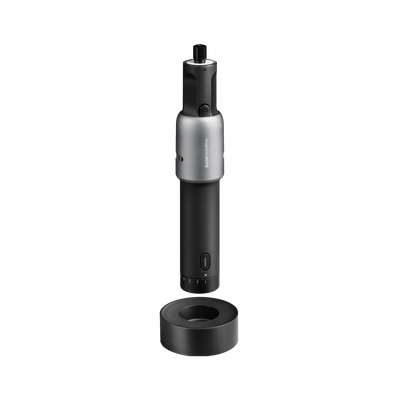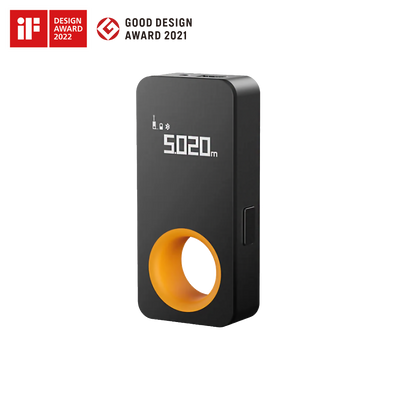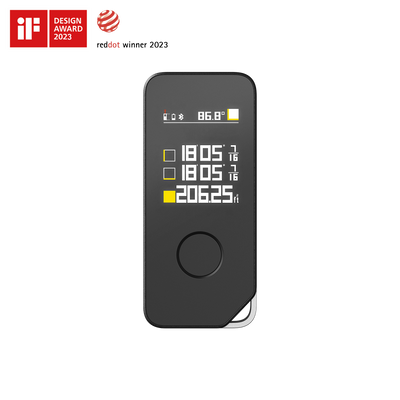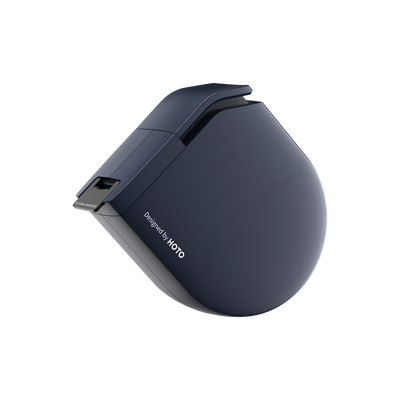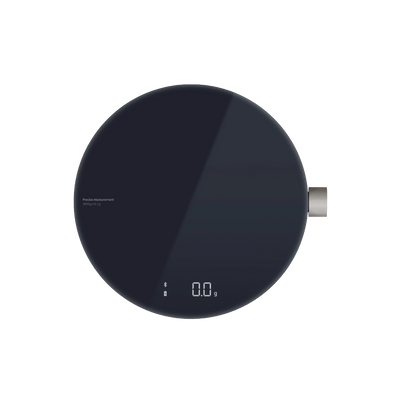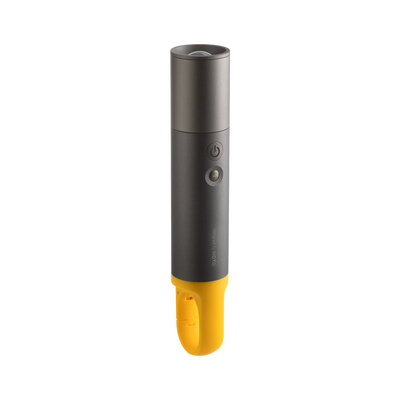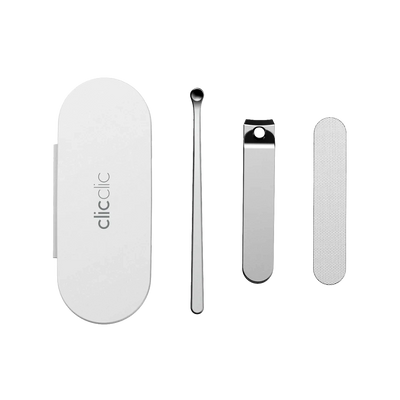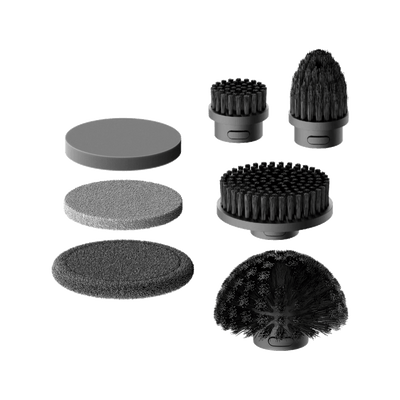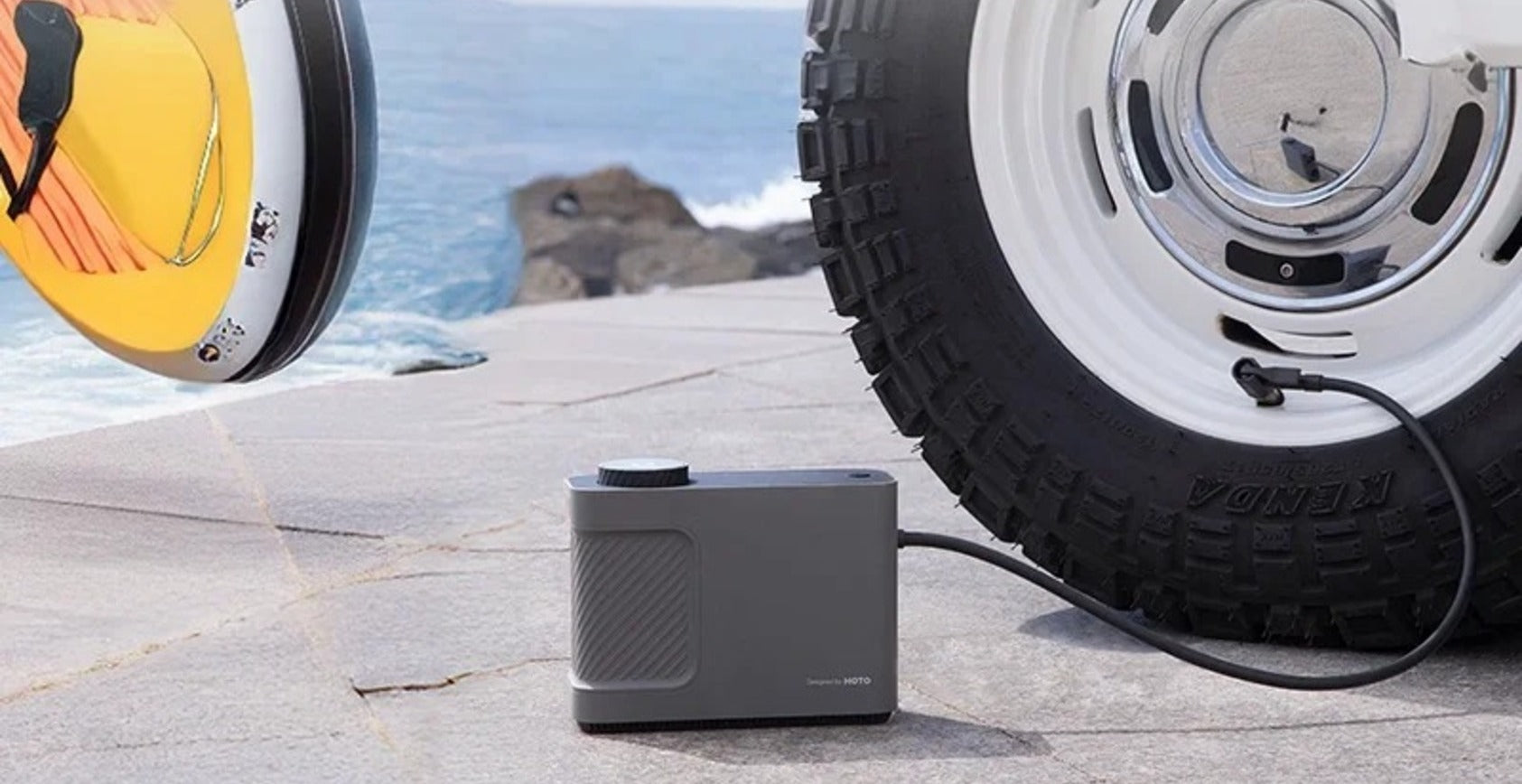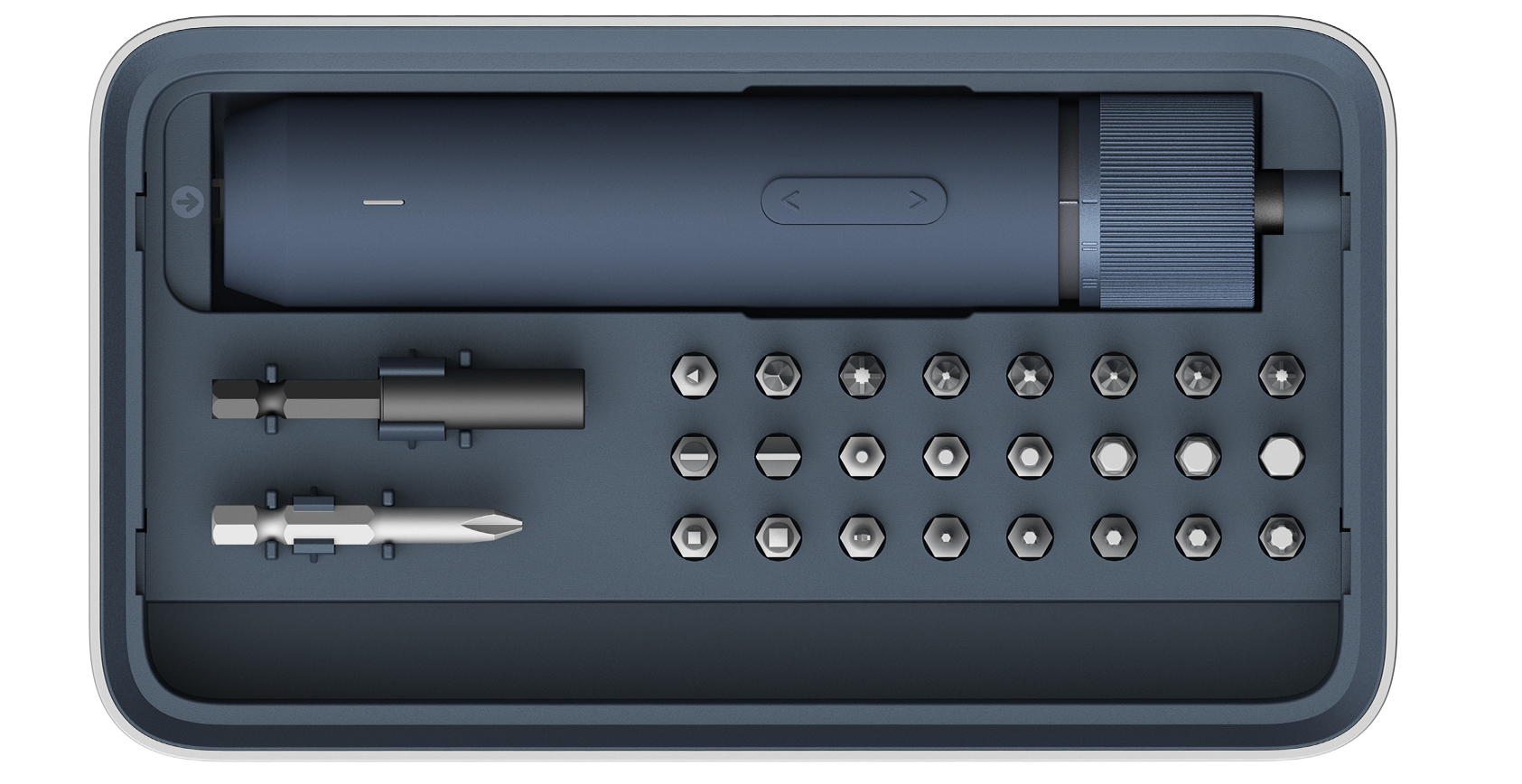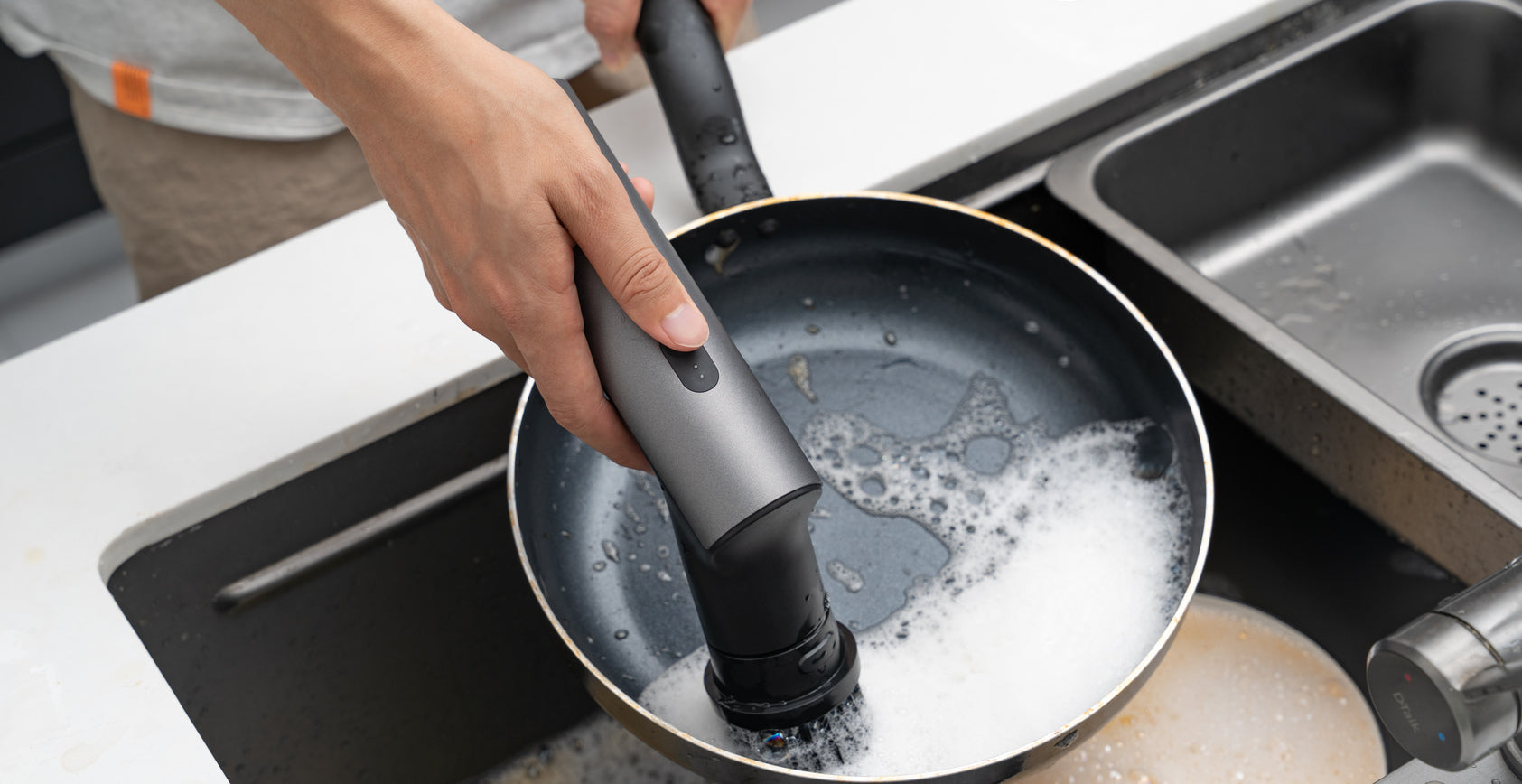
How can a cordless electric spin scrubber simplify cleaning tasks
Cleaning a room, a workbench, your car, organizing a closet, or even just personal grooming all take a lot of energy. Many folks struggle to get these tasks done effectively. Some people have disabilities that make it hard to plan out cleaning or finish it step by step. Others deal with health issues that limit how long they can stand or how much physical work they can do. These challenges can turn cleaning into a big job that people put off. Learning the right cleaning methods and having tools like a cordless electric spin scrubber can really help. It can make cleaning easier and maybe even something you don't mind doing.
The difference among daily cleaning, general cleaning and deep cleaning
The differences mainly show in the frequency, purposes and activities.
Daily cleaning usually includes basic chores such as doing dishes and organizing items. For some of the more tidy people, daily cleaning also includes sweeping and mopping. It aims to maintain cleanliness and tidiness on a day-to-day basis. So, to determine if an activity is a daily activity, ask yourself a simple question, “If I don't do this for a day, will my apartment immediately look messy?”
Simply put, general cleaning is all about focusing on all the cleaning tasks you don't normally do on a regular basis without over-complicating things in a few days or less. It is done less frequently than daily cleaning, often weekly or bi-weekly, which includes tasks like vacuuming, mopping floors, cleaning bathrooms and kitchens more thoroughly, dusting surfaces, and changing bedding.
Regularly, the flats need at least a once-a-year deep cleaning-- the most intensive and infrequent type of cleaning. The word deep means you need to be in-depth with the cleaning. It aims to clean areas that are often neglected or hard to reach during daily or general cleaning sessions, ensuring a more comprehensive sanitation and removal of built-up grime and dirt. It involves many detailed tasks such as cleaning inside appliances, like refrigerator and oven, scrubbing tile grout, washing windows inside and out, deep-cleaning carpets and upholstery, and organizing and decluttering spaces thoroughly.
The cleaning sequence
Organize First, Then Clean
First, deal with clutter by disposing of items that need to be thrown away and organizing those that need to be stored. By ensuring everything is in its place, the efficiency of subsequent cleaning tasks can be greatly improved.
Top to Bottom
When cleaning each room, it's effective to follow this sequence: start with the ceiling, move to the walls, then clean the windows, household appliances, and furniture, and finish with the floor. This approach prevents dust from settling on lower surfaces after they've been cleaned. For instance, in the bathroom, clean major areas like the bathtub, toilet, and sink before tackling corners, walls, floors, and ceilings. This method ensures a thorough cleaning without overlooking any areas.
The importance of regular cleaning
Maintaining Hygiene
Regular cleaning prevents the buildup of dirt, grease, and food residues that can harbor bacteria and germs. This helps maintain a clean and sanitary environment, especially in areas like kitchens and bathrooms where hygiene is paramount.
Preventing Health Risks
Accumulated dirt and grime can contribute to respiratory problems and allergies, particularly when mold, dust, or pet dander are present. Regular cleaning reduces these risks by removing allergens and pollutants.
Preserving the Appearance
Cleaning regularly helps preserve the aesthetic appeal of surfaces, furniture, and appliances. It prevents stains, discoloration, and wear that can occur over time if dirt and debris are left unchecked.
Extending Lifespan
Regular maintenance and cleaning can prolong the lifespan of appliances, equipment, and surfaces. For example, cleaning filters on HVAC systems, range hoods, and refrigerators ensures they operate efficiently and last longer.
Self-healing
When it comes to self-healing, many people might think about traveling to relax and recharge before facing the challenges of life again. When we feel that enjoying ourselves or isolating from the outside world is the best way to recharge, we inadvertently neglect the daily aspects of life, those things that, if done properly, can nourish ourselves. Household chores often give people an initial feeling of fatigue. However, during cleaning, our consciousness becomes simplified because, in the process of removing dirt and dust, we do not need to think. Invisibly, we also clear our minds for a period of time, completing a self-purification of body and mind. When cleaning a space, we are also cleaning ourselves.
How can a cordless electric spin scrubber simplify cleaning tasks
Mobility
Corded electric spin scrubbers need to be plugged into a power outlet during use. They typically provide consistent power without the need for recharging, making them suitable for longer cleaning sessions. Cordless electric spin scrubbers are powered by rechargeable batteries. While corded models provide continuous power, they are limited by the length of their power cord. This can restrict movement and reach, especially in larger areas or spaces far from power outlets. On the contrary, cordless models offer greater mobility and flexibility in movement since they aren’t tethered to a power outlet.
Versatility
A cordless electric spin scrubber with changeable brush heads can be used in many different situations, saving time and effort that would otherwise be required to change tools. It eliminates the need for strenuous manual scrubbing. With motorized bristles, it can effectively scrub surfaces with minimal effort from the user. They can easily reach tight corners, high places, or areas without easy access to power outlets.
High-efficiency
The motorized scrubbing action of a cordless electric spin scrubber provides consistent and powerful cleaning. This helps to effectively remove stubborn dirt, grime, and stains from various surfaces. Compared to traditional manual scrubbing methods, a cordless electric spin scrubber can significantly reduce cleaning time. The motorized action speeds up the scrubbing process and requires less physical effort from the user.
How to choose an Electric Spin Scrubber?

You can choose an electric spins scrubber following these standards.
Battery Capacity and Runtime
The Cordless electric spin scrubbers run on battery power, which means battery capacity and runtime matters and can determine the feeling of using. So you should Consider the battery life and charging time. A longer-lasting battery is beneficial for larger cleaning tasks, while quick charging can minimize downtime. The duration of cleaning is pegged to the capacity of the unit’s inbuilt battery. Ordinary, a battery capacity of 4000mAh and above is awesome.
Handle design
A well-designed handle enhances comfort during use, especially for extended cleaning sessions. Ergonomic handles are shaped to fit comfortably in your hand, reducing strain and fatigue. Handles with adjustable lengths or angles allow you to reach high or low areas without straining. This versatility improves accessibility to various surfaces such as tight spaces and corners around your home or workspace. This is something you definitely want to consider.
Noise Level
No one want a very noisy scrubber, which is very bothering for everyone at home. A good electric spin scrubber should have minimal noise during operations. When shopping, brands with noise levels equal to or less than 70db can be prioritized.
Replaceable Brush Heads
Rough or even surfaces differ in the tools and intensity of cleaning. To guarantee spotless cleaning of all surfaces, most manufacturers provide a range of brush heads for each spin scrubber. So you might want to check the package box for additional scrub heads. And they come in different types, specifically built for cleaning different surfaces.
Water Resistance
Electric spin scrubbers are often used in wet environments like bathrooms, kitchens, and outdoor areas. Water resistance ensures that the scrubber can withstand exposure to water without malfunctioning or posing an electrical hazard, enhancing the safety level. What’s more, water-resistant electric spin scrubbers are built with materials and seals that protect internal components from water damage. This extends the lifespan of the scrubber and reduces the risk of corrosion.
The different occasions to use a electric spin scrubber
In bathroom
Do you often encounter these issues in your bathroom? Do you notice a lingering odor even after cleaning? Are there stubborn black and greasy residues in the cracks of your floor and wall tiles? Does your bathtub develop yellow stains over time? And does the mirror always end up with small white spots from shower mist?
If any of these problems sound familiar, it's time to give your bathroom a thorough cleaning.
Bathroom cleaning can be a real hassle, especially since it's constantly exposed to moisture year-round. High temperatures and humidity create the perfect conditions for mold growth, which not only affects the bathroom's appearance but also impacts your family's health. Plus, the bathroom's nooks and crannies make it even trickier to clean thoroughly.
Start by gathering the necessary cleaning tools and materials before you begin. You'll need power brushes, disinfectants, and cleaning agents. Making sure you have everything on hand will streamline the cleaning process and make it more efficient.
1.Tile and Grout
Bathroom in order to waterproof the needs of the wall and floor are generally used tiles. Generally speaking, tiles are relatively easy to clean compared to other materials due to their smooth surface. Daily use of mops, rags, etc. can be relatively easy to remove stains, restore the cleanliness. However, in reality, most families can’t do daily cleaning tiles, then the bathroom tiles may form soap scum and water stains and so on.
When the tiles around the faucet are wet with water, it is easy to have yellow rust or scale that is hard to clean. For this situation, just use water to clean is not enough, you can use 3-4 grains of VC, they will be crushed into powder, coated in the rusty tile surface, and then use bathroom cleaning brush with long handle to clean, you can remove the rust.
In tile crevices, where there tends to be a greater amount of dirt buildup, you can loosen up and dissolve that dirt and grime. And it’s so much easier using this from a standing position and setting, having to get down on your hands and knees and scrub away the dirt with a brush dipped in a small amount of stain remover before brushing a waterproofing agent over the crevice.
2.Bathtub

Busy day, come home to put hot water, and then soak in the bathtub in the middle, around the favorite aromatherapy candles, close your eyes, often people feel the most relaxed moment of the day. But many people buy a bathtub, less than a few days it began to appear odor, yellow edges, breeding bacteria because oils and grease from the body and shower gel can accumulate at the bottom of the bathtub over time. If it’s not really cleaned well, then the bacteria left in the bathtub may bring about skin diseases and other symptoms.
The bristles are tough enough to scrub away stubborn dirt, yet gentle enough to protect delicate surfaces, ensuring a thorough but safe cleaning experience. It's full body waterproof design is another great attribute of this scrubber. This feature provides peace of mind, allowing me to use the device even in wet environments, such as the shower or around the sink.
3.Floor drain
According to a report from "Life Times," the website of the British magazine "New Scientist" cited a study from Germany which found that 82% of households have been found to contain antibiotic-resistant bacteria, especially in floor drains. Bacteria in floor drains develop resistance due to frequent contact with antibacterial ingredients in soaps and cleaning products, and even small amounts of these bacteria can cause illness.
Using an old toothbrush makes it difficult to clean the floor drain thoroughly and poses the risk of it falling off. A suitable brush head can easily solve this problem. Open the floor drain, remove debris such as hair and soap residue, then use HOTO electric spin scrubber with pointed brush and cleaner to scrub. After cleaning thoroughly, pour about 500ml of clean water into the drain, add about 1 teaspoon of disinfectant, wait for 30 minutes, then pour in clean water again. This completes a thorough cleaning of the floor drain.
In kitchen
1. StovetopThe stovetop is where we do most of our cooking, which means it's prone to accumulating oil stains.

- Preventive measures: While cooking, you can cover the area around the cooktop with aluminum foil or cling wrap to reduce direct contact with oil. Regularly changing these covers will help keep your cooktop clean over time.
- Daily cleaning: After cooking, wipe down the surface with a damp cloth before grease hardens, making sure to clean any corners and edges to prevent grease buildup.
- Deep cleaning: Even with daily wipe-downs, it's important to deep clean your cooktop at least once a week. Use a specialized cooktop cleaner along with an electric spin scrubber for more effective cleaning. For tough grease stains, spray the cleaner directly on the stains and let it sit for a few minutes before wiping off for better results. This routine ensures your stovetop stays clean and ready for your next meal prep.
2.Sink
- Daily cleaning: For everyday sink upkeep, stick to mild cleaners. Gently scrub with a soft sponge or cloth, rinse well with water, and dry it off to prevent any steel brushes or rough tools that could scratch up the sink or leave metal marks that might turn into rust stains.
- General cleaning: If you're not big on keeping the sink spick and span regularly or just short on time, here's a simple routine: Fill up the sink with water and toss in a cup of vinegar. Let it sit for about thirty minutes. Then, make a paste using baking soda and water to scrub down the sink. For those greasy spots, sprinkle some table salt and rub them out with a piece of used cling wrap. Rinse everything well with warm water to bring back that shine. Don't forget the corners and drains—a small brush dipped in soapy water or cleaner works wonders there. And for the drain cover, soak it in warm, soapy water for at least ten minutes before giving it a good scrub.
- Deep cleaning: Faucets above the sink can accumulate a lot of stains over time. You can scrub them with a steel wool pad dipped in cleanser, rinse with clean water, then repeatedly wipe with a damp cloth dipped in toothpaste or directly with lemon slices to restore their brightness. If there are stubborn water stains on the faucet, rubbing a fresh lemon slice over it several times can effectively remove the stains. For mineral deposits in the sink, use warm water with vinegar or scrub with toothpaste or talcum powder. There are also specialized polishing pastes available in the market to remove water spots and rust stains.
3.range hood
Cleaning a range hood is essential to maintain its effectiveness in removing grease, smoke, and odors from your kitchen. Here’s how you can clean a range hood effectively.
- Turn off the Power: Ensure the range hood is turned off and unplugged to avoid any electrical hazards. Move pots and bowls to a clean area to avoid secondary contamination.
- Remove Filters: Most range hoods have filters that trap grease and debris. Use a screwdriver to remove the screws that can be disassembled around the filter according to the manufacturer's instructions. If the screws are rusted, you can use a grinder to cut them off. To facilitate easier cleaning next time, replace these screws with detachable snap screws.
- Scrub: To clean, grab some specialized cleaning powder and a wire or electric brush. Sprinkle a little water on the dirty spots, then dust on the cleaning powder to tackle any leftover grease or grime. Let it sit for about a minute, then scrub away for an easy clean-up. Don't forget to get into the nooks and crannies—like knobs, buttons, and edges—where grease likes to hang out. Use the same method for filters and other parts that need a good scrubbing.
- Inspect the Ventilation Duct: If accessible, inspect the ventilation duct for grease buildup or debris. Use a vacuum cleaner with a brush attachment to remove loose particles. For a deeper clean, consider detaching the ductwork from the hood and cleaning it separately.
4.Pots and Pans:

- Daily cleaning:First, place the pot in tap water, shake it a few times, and pour out most of the larger debris. Then, add a small amount of water and dishwashing detergent, using a cloth or a cordless spin scrubber to scrub the pot, paying attention to cleaning from top to bottom, and from the outside in, especially focusing on stubborn stains on the bottom of the pot.
- Handling Burnt Pots: If a pot is burnt, first soak it in boiling water to soften the burnt residue.You can use apple peels, pear peels, or potato peels boiled in the pot to help remove the burnt residue. Pour in heated vinegar for cleaning, or boil with salt and citric acid to effectively remove burnt residue.
- Cleaning Non-stick Pans: For non-stick pans or those with coatings, avoid using steel wool to prevent damaging the coating. Use a soft brush that is firm but gentle on the pan wall for cleaning. These steps will help you keep your cookware clean, and choosing appropriate cleaning methods for different types of cookware will extend their lifespan.
Other occasions
1.Window
Dirt and mold can corrode glass surfaces and weaken the structural integrity of the glass, leading to premature deterioration and a worn-out look. Regular cleaning prevents the buildup of these substances, thus extending the life of your windows.
When cleaning glass, window frames and other parts of the profile, you need to dip the brush head into a little water or neutral detergent to clean. You can't use ordinary washing powder or soap, or strong acid and alkali detergents such as stain washing powder or toilet cleaner, because these detergents will corrode the surface of the profiles.
The robust motor of HOTO electric spin scrubber provides a strong cleaning torque of 2.5Nm, offering substantial power without excessive speed, great ideal for thorough cleaning without risking damage to the surfaces.
2.hardwood Floor
- Daily Dusting: Using a vacuum cleaner or a cotton cloth to comprehensively dust the floor is the most effective daily maintenance method to prevent scratches and damage to the floor surface. Alternatively, a broom can also be used for cleaning, but it tends to scatter dust everywhere. To ensure that no damage is caused to the floor during cleaning. If your vacuum cleaner has a brush attachment, ensure it doesn't impact bare floors. Additionally, be mindful that vacuum cleaner wheels can also potentially damage floors.
- Weekly Cleaning: Weekly maintenance addresses areas that are difficult to reach during daily dusting. Vacuum cleaners, wet mops, and electric spin scrubbers are all excellent for removing dust from places rarely cleaned during routine maintenance, such as corners and spaces between hardwood floors. However, when using vacuum cleaners and mops, extra caution should be taken to avoid scratching or otherwise damaging the floor. When using mops and electric spin scrubbers, remember to avoid excessive liquid on the floor; they should only be slightly dampened.
- Monthly Waxing: To restore protective coatings and enhance shine, wood floors should be waxed every 2-4 months, depending on the traffic in the household. Waxing hardwood floors helps refurbish and protect the floor's finish. For floors sealed with protective sealants, the focus during cleaning should be primarily on the finish rather than the actual hardwood itself. When waxing wood floors, the wax fills in minor scratches on the floor and even spills onto the floor's protective surface.
- Deep Cleaning: Given the foot traffic endured by hardwood floors, it is advisable to consider deep cleaning every 3 to 5 years, which may include sanding and reapplying varnish. If opting for a complete refinishing of the floor, it's necessary to remove the old protective varnish. Deep scratches or dents on the floor can be repaired through sanding and refinishing, restoring the hardwood floor to its pristine condition.
3.Carpet
- Daily Cleaning: Carpet fibers easily accumulate dust, especially longer fibers like those in wool carpets. A vacuum cleaner is a great tool for dealing with dust hidden in carpets. Start by using a vacuum cleaner to clean the carpet extensively, as the first step in dust removal. Then, use a handheld vacuum cleaner to meticulously treat areas where dust has settled heavily, such as under coffee tables, in corners, along bed edges, and along the edges of the carpet. The second cleaning should be thorough. If dust is not cleaned for a long time, the surface of the carpet may change color or deteriorate.
- Removing Odors: Those who have pets at home know that pets playing on carpets can leave odors. Even without pets, carpets left indoors for a long time can develop odors due to bacterial growth. In such cases, pour four cups of vinegar into four liters of warm water, soak a towel in this solution and wring it out. Wipe the carpet thoroughly from end to end, then place it in a well-ventilated area to air dry naturally. This method not only eliminates odors from pets and prolonged carpet use but also helps prevent the carpet from fading or discoloring.
- Targeted Treatment for Different Stains: Liquid stains can be removed if action is taken immediately after they are poured on the carpet. If a new cleaner or stain remover is used on the carpet for the first time, check that the cleaner will not damage the carpet. Bleeding, discoloration, bleaching or dissolving may cause damage. For this reason, it is recommended that cleaners and stain removers be tested on a postage stamp sized area. It may be located in a corner, under a radiator or similar area. Cleaning stains whether large or small is relatively easy with cleaners and HOTO electric spin scrubber. It's important to promptly remove stains from carpets, but different stains require different cleaning methods to avoid damaging the carpet.
- Beverage Stains: Immediately blot up excess moisture with a dry cloth or paper towel, then lightly dab the stain with a cloth dampened with vinegar. Repeat several times to remove the stain from the carpet.
-
Pet Urine Stains: For fresh stains, flush them out with warm water or a solution of 10% ammonia. For older stains, start with detergent to clean them up, then follow up with the ammonia solution.
-
Soy Sauce Stains:For fresh stains, start by rinsing with cold water, then wash with detergent to lift the stain out. For older stains, use a mix of warm water, detergent, and ammonia to clean thoroughly, then rinse well with clean water.
-
Wine Stains:For fresh stains, start by using water to clean them up. For older stains, you'll need a mix of ammonia and borax in water to get rid of them. If you're dealing with wool or silk carpets, oxalic acid is the way to go for cleaning.
-
Vomit Stains:One method is to start by wiping the stain with gasoline, then follow up with a 5% ammonia solution. Finish by washing the area with warm water. Alternatively, moisten the vomit with a 10% ammonia solution first. Then, wipe with a soap solution that contains alcohol. Finally, clean the area thoroughly with detergent.
How to clean Your cordless Electric Spin Scrubber’s brush heads for Longevity
Think about all the things you clean regularly: food crumbs, pet hair, hair strands, dirt, confetti, and even dead skin. Over time, your brush head can get pretty rough, so it's crucial to clean it regularly. Keeping your brush head clean regularly will help it last longer and keep your cleaning brushes effective.
Power Off
Ensure the electric spin scrubber is powered off and the battery is removed to avoid accidental activation during cleaning.
Remove the Brush Head
If your scrubber allows for easy removal of the brush head, gently detach it from the scrubber unit. Like HOTO, its brush head securely locks into place with the quick-detach design, allowing for easy removal by gently squeezing with two fingers. This clever design guarantees effortless and convenient brush head replacement.
Rinse Thoroughly
Rinse the brush head under running water to remove any loose dirt, debris, or cleaning solution residue. Use your fingers or a soft brush to scrub stubborn dirt if necessary. Then check the brush head for any remaining residue, especially if it has been used with cleaning solutions. If there are stubborn stains or buildup, you can soak the brush head in warm water with a mild detergent or vinegar solution for a few minutes to loosen it.
Disinfect and rinse Again
After soaking or cleaning, rinse the brush head thoroughly under clean running water to remove any cleaning solution or disinfectant. To disinfect the brush head, especially if used in areas like bathrooms, where are prone to bacteria or mold, you can soak it in a solution of water and disinfectant for about 10-15 minutes.
Dry
Shake off excess water and allow the brush head to air dry completely before reattaching it to the spin scrubber or storing it. Ensure it is completely dry to prevent mold or mildew growth. Once dry, reattach the clean brush head to the spin scrubber unit if necessary, or store it in a dry and clean place until its next use. You also need to periodically inspect the brush heads for any signs of wear or damage, such as frayed bristles or cracks in the plastic. Replace worn-out brush heads promptly to maintain optimal cleaning performance.
The benefit of using HOTO electric spin scrubber
Easy to use
Even if you don't know this tool at all, you can get started right away by following the manual step by step. Long-press the power switch to turn on the device and press the mode switch to change speed. Match the socket and connect or to attach the brush head, press unlock buttons to remove it. Attach the extension rod to the spin scrubber by aligning the socket, then insert and rotate it clockwise. To adjust the rod, turn the rear handle counterclockwise, pull to desired length, then turn it clockwise to lock.
An adjustable handle

This cleaning tool features a removable extension pole that can be adjusted from 35-47 inches, allowing you to reach every corner of your home, including hard-to-reach areas. The long handle allows people to clean hard-to-reach areas without crouching bending or kneeling, which hurt the body a lot and make people feel tired and painful quickly before they finished all cleanings. Some people who are not tall enough to clean the ceiling need to step on a chair or ladder and risk falling if they are not careful, while cleaning the floor need people to kneel down. The bathroom cleaning brush with long handles can solve both problems, not only does it help to make up for what people lack in height, but also make cleaning a easier job. For anyone who suffers from a injury, disability or other mobility issues, it’s also a user-friendly tool that prevents or imperils their ability to perform basic cleaning tasks.
Dual-Speed Cleaning
You can easily choose between two-speed settings with just one click. The Soft and Slow one is 220 r/min. The Strong and Fast one is about 300 r/min. The former can be used for more fragile surfaces or dirt that is easier to remove, while the latter can easily cope with those stubborn stains. Equipped with a robust 4000mAh high-capacity lithium battery, it offers a long-lasting cleaning session.
Versatility
One of the standout features of this scrubber is its versatility. It can enhance your cleaning routine with the wide range of brush heads. With six interchangeable brush heads and an extension pole, it's suitable for cleaning a wide range of surfaces, including bathroom tiles, kitchen countertops, floors, walls, and even outdoor spaces. The variety of brush heads allows you to tackle different cleaning tasks with ease, from gentle scrubbing to more stubborn stains.
Long-lasting Nylon Bristles
Enjoy durable and reliable cleaning with the long-lasting nylon bristles, ensuring effective and efficient scrubbing for all your cleaning needs. Customers are satisfied with the battery life of the cleaning brush. The battery life is long enough for most jobs and charges fairly quick.
Water resistance
Fully waterproof to effectively withstand water, whether it's in the sink or the bathtub, cleaning is safe and hassle-free.
FAQs
How often to clean the brush head?
You should clean your brush once a week or every other week, depending on how often you use it. It is recommended that you clean your brush with a mild detergent to prevent build-up.
What should I pay attention to when using this product?
Based on protection mechanism of 0V battery charge inhibition, please don't leave the machine uncharged too long, otherwise, it can't be recharged anymore.
On account of circuit protection function, the machine couldn't run while charging.
How does a cordless electric spin scrubber work?
A cordless electric spin scrubber works by using a motor to rotate its brush head at high speeds. This rotation helps to quickly and efficiently remove dirt, grime, and stains from various surfaces.
What surfaces can you clean with a cordless electric spin scrubber?
Cordless electric spin scrubbers can be used on a variety of surfaces, including tiles, grout, bathtubs, sinks, showers, floors, and even outdoor furniture. They typically come with different brush heads for different cleaning tasks
Summary
In conclusion, a cordless electric spin scrubber represents a significant advancement in home cleaning technology, offering unparalleled convenience and efficiency. Its ergonomic design and powerful rotating brushes streamline even the most challenging cleaning tasks, from bathroom bathtubs to kitchen sinks, without the need for excessive scrubbing or manual effort. By eliminating the constraints of cords and enhancing maneuverability, this device not only saves time but also ensures a thorough and effective clean in hard-to-reach areas. Whether tackling daily maintenance or deep cleaning sessions, the cordless electric spin scrubber proves to be a versatile ally, transforming tedious chores into quick and satisfying accomplishments. Incorporating this innovative tool into your cleaning routine promises not only cleaner spaces but also a more enjoyable and effortless approach to maintaining a pristine home environment.


